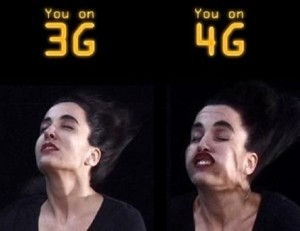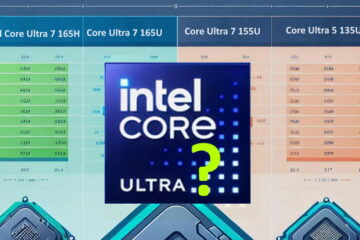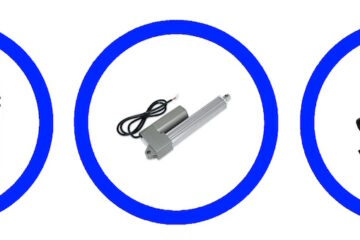Voice over LTE (or VoLTE), much like Voice Over IP (or VoIP) is a new standard for mobile devices (like your cell phone) that will drive the cost of voice calls down to near zero. To understand the technology, you need to understand that LTE is a data only network. From 1980’s until 2015, if you have a cell phone, you are definitely connecting on a VOICE network. As we all know today, DATA is an add-on.
What is Voice over LTE or VoLTE?
The audio from someone talking into a phone can easily be converted into digital data (a whole pile of zero’s and one’s that computers understand) and then sent through a data only network… like LTE. This means that you are NOT using a voice network on your cell phone any more, you are only using your data plan (or WiFi if you are connected to your office or home WiFi network).
This is all possible because our data network speeds have increased so much. See the WHAT IS LTE and LTE-A section at the bottom of this post.
Two notable problems with VoLTE are:
- NON-STANDARD IMPLEMENTATION: It has been implemented in a variety of ways by a variety of carriers so interoperability is not as seemly as is should and will be in the future. This means that if you were an American making call from his Verizon Samsung Galaxy cell while travelling to the UK and connected on an Orange network (or whoever Verizon’s telecom partner is in the UK), VoLTE may not work.
. - 911 SERVICE: 911 is an increasingly important service that is being legislated as a requirement all over the world. This means cell providers need to have a pretty good idea of your location which is very hard to do when you are working on a data network. On a map, your VoLTE connection will likely show as originating at some data center rather than at your current physical location. This is why services like Skype have a tiny little warning at the bottom of their app or web page that says, SKYPE CAN NOT BE USED FOR 911 EMERGENCIES. The solution is “E911” but in 2015 E911 is still not implemented and so 911 service remains an issue.
.
For more information of VoLTE, you will likely find THIS article useful.
What is Voice over IP (VoIP) and How Does Skype Work?
The internet is also a data only network; it cannot carry voice signals. If that is true, you may ask, how does Skype, Vonage, and other companies send your voice over the internet. The short answer is, they don’t send your voice; they convert your voice to digital data and send that through the internet to the person you are ‘talking’ to. You may then ask, what if you are calling to a land line; that is not connected to the internet so how does that work. This is easier than you might think. Skype and similar companies simply have a giant bank of phone lines in each major city (or country if it is small enough) and when you try to call a land line, your voice gets encoded, shipped through the internet to the recipients region (city or country) then a computer picks up a local land line and automatically calls the local number. This eliminates the high cost of “long distance”.
How to Turn On or Off Voice over LTE (VoLTE)?
The instructions below are for a Samsung Android cell, but similar instructions will likely apply to all cell phones.
- Start your PHONE app
- Click MORE (or three dots icon) in the top right corner of the screen (or the OPTIONS/MENU button on older devices)
- Click SETTINGS
- Find and disable VOICE OVER LTE
- only available on some models and firmware versions, so don’t look too hard
- This will be on ALL devices in the future
- LTE is a Data Only network and does not carry voice… but voice can be converted into digital data and sent over LTE.
If you are having problems with your inbound cell calls going directly to voicemail, you will find THIS article useful.
What is LTE and LTE-A?
In case you are wondering, LTE stands for Long Term Evolution and that is exactly pretty much sums up why nearly all cellular providers have gone to it. It is the standard for 2015 but has newer, faster versions that will be coming for many years to come. In fact, LTE is really a 2012-2014 standard. In 2015, LTE-A or LTE-Advanced is the standard. The Samsung S5, S6 and even the lowly iPhone 6 support LTE-A and most carriers (like Bell and Verizon) now provide LTE-A capable towers across most of their network. Below is a simplified summary of the speeds you can expect from the common networks today. Remember that “G” = Generation, so 3G, just means it is the third notable generation of data networks.
- 3G = 13MB/second
- LTE = 4G = 100MB/second
- LTE-A = 5GB = 3GB/second
For more information on LTE, you will likely find THIS article useful.



3 Comments
Andrew · April 9, 2016 at 2:10 am
I want to create a self help mp3 with my voice and adding aspirations over music I have in my Itunes library. Will your software allow me to do this?
Ian Matthews · May 29, 2016 at 11:24 am
Hi Andrew;
I am sorry but I don’t know what software you are referring to. I see that you have a URL link which we normally delete but I will leave this one in case someone can use it.
Turning Off WiFi On Different Devices: How To Do It Properly – Up & Running Technologies, Tech How To's · February 20, 2022 at 10:52 am
[…] you want to disable WiFi on an Android device the steps are almost the same. You will need to go to the Settings too. Just swipe down from […]